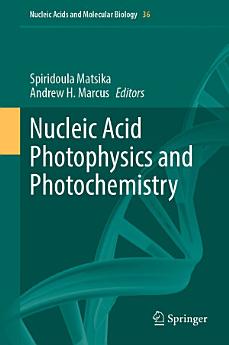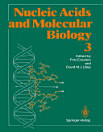Nucleic Acid Photophysics and Photochemistry
About this ebook
Understanding the photophysical properties of nucleic acids is an area of longstanding and active research. Over the years, the field has greatly benefitted from steady advances in spectroscopic techniques and computational methods to study molecular excited states, which have facilitated detailed studies of the behavior of nucleic acids and their components after they absorb light. Experiments performed on ultrafast time scales (femtoseconds - picoseconds) have permitted the accurate determination of excited state lifetimes, while computational studies have provided detailed microscopic information about the mechanisms involved. As our understanding of the fundamental photophysics of nucleic acids has advanced, current studies now focus on systems of higher complexity, and introduce novel optical techniques to investigate the interactions between nucleic acids and proteins. Spectroscopic studies of nucleic acids, particularly nucleic acid constructs labeled with optical probes, can yield richly detailed information important to molecular biology, biochemistry and biophysics.
This book is a must-read for anyone interested in the photophysical properties of nucleic acids and their role in biologically relevant phenomena.
About the author
Spiridoula Matsika received a B.Sc. in Chemistry at the National and Kapodistrian University of Athens, Greece, and a Ph.D. in Chemical Physics from The Ohio State University. After completing her Ph.D. she spent three years as a postdoctoral fellow at Johns Hopkins University working with Prof. David Yarkony. In 2003 she started her independent career in theoretical chemistry at Temple University in Philadelphia, where she is currently a Professor of Chemistry. Spiridoula Matsika’s research interests focus on the theoretical quantum mechanical study of excited states, and theoretical modeling of photophysics and photochemistry of molecules, particularly of biological interest.
Andrew H. Marcus received a B.A. in Chemistry at the University of California, San Diego. He received a Ph.D. in Physical Chemistry from Stanford University where he worked withMichael D. Fayer on the photophysics of macromolecular systems. He was a postdoctoral fellow at the James Franck Institute, University of Chicago, where he studied the kinetics and thermodynamics of colloidal liquids with Stuart A. Rice. He began his independent research career in 1996 at the University of Oregon in Eugene, where he is currently a Professor of Chemistry and Biochemistry. His research interests focus on studies of the ‘breathing’ dynamics of nucleic acids and the mechanisms of protein-nucleic acid interactions using novel ensemble and single-molecule spectroscopic methods.







